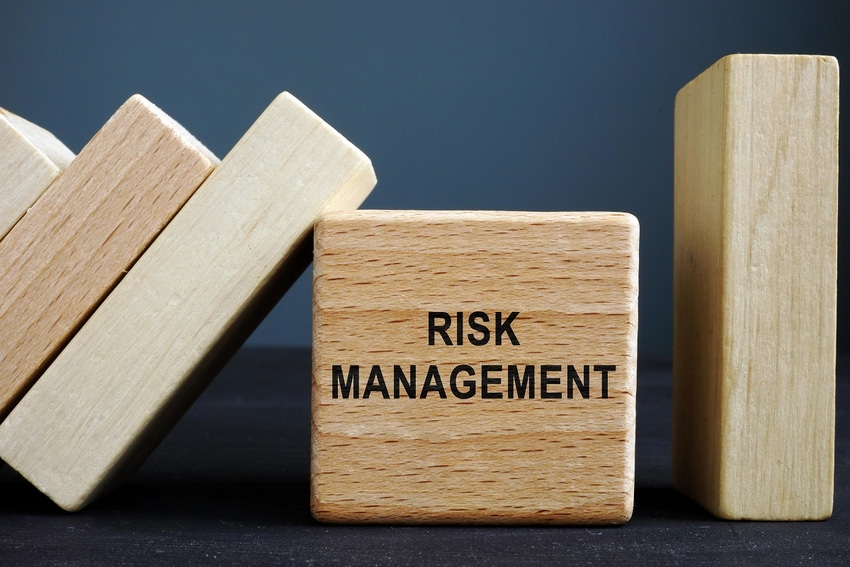5 Best Practices for Implementing Risk-First Cybersecurity
Embracing a risk-first mindset empowers organizations to make informed decisions, strengthen security, safeguard valuable assets, and reduce financial impact.

Organizations face an uphill battle to safeguard hybrid cloud assets and sensitive data from evolving cyber threats in an increasingly interconnected and digitized world. While the security-first approach is essential, it has limitations in addressing the dynamic nature of these threats. The risks resulting from these threats are multifaceted and sophisticated, encompassing cybersecurity, compliance, privacy, business continuity, and financial implications. Therefore, a shift toward a risk-first approach is necessary.
To fully appreciate the advantages of the risk-driven approach, it is vital to recognize the constraints of the security-first approach. Security is crucial, but it's just one facet of the broader risk landscape. Focusing solely on security can overshadow other equally important considerations.
Although tactical security measures like firewalls and encryption are critical, they do not address all the risks. Relying on a reactive approach that only deals with known threats can leave organizations vulnerable to emerging risks. Additionally, a rigid security-centric mindset can hinder adaptability and neglect non-technical risks, such as compliance and human error. This narrow approach may result in inefficient resource allocation, with disproportionate investments in preventive measures.
Why Choose the Risk-First Approach
The risk-first approach is a proactive strategy that acknowledges interconnected risks across multiple dimensions. Benefits include early issue identification, timely preventive measures, and efficient resource allocation. It aligns with business objectives, facilitating systematic risk evaluation and enabling informed risk mitigation decisions. It fosters adaptability to evolving threats through continuous monitoring and assessment of the hybrid cloud environment. It prioritizes protecting critical assets and vulnerabilities, guiding resource allocation to safeguard essential elements of operations. Focused resource allocation optimizes time, budget, and effort, avoiding wasteful spending.
Embracing this approach empowers organizations to proactively manage risks, enhancing cyber resilience for sustainable success. Furthermore, to achieve comprehensive and effective risk management, organizations must encourage collaboration among all teams, including operations, compliance, governance, and finance, to gain diverse risk perspectives.
Additionally, they must comprehend the complex nature of risks, risk attribution, and quantification. By identifying the components that can cause the most harm and quantifying risks, organizations can detect, prioritize, and remediate findings faster.
Best Practices for Implementing a Risk-Based Method
When discussing a risk-based approach with chief information security officers (CISOs), their initial concerns are often about its relevance, implementation, and benefits. A reliable framework like the National Institute of Standards and Technology Risk Management Framework (NIST RMF) helps manage overall organizational risk. It can identify, assess, and mitigate potential risks before they become issues.
Implementing this approach based on an approved framework allows for consolidating thoughts, ideas, processes, and technology. However, choosing the right framework requires careful consideration to ensure accurate risk evaluation.
Utilizing quantitative vs. qualitative approaches: Quantitative risk assessment is essential for scoring, identifying trends, and understanding key risk contributors over time. However, the qualitative approach is subjective. The quantitative approach identifies major risk contributors and high-risk elements, providing precise insights into the hybrid cloud environment. Additionally, it attributes risk to the right department or application, holding them accountable and fostering a robust risk management system. It empowers organizations to comprehensively understand risks at macro and micro levels, facilitating informed decision-making and efficient resource allocation.
Incorporating gamification techniques: To encourage active participation from all team members, organizations can employ gamification techniques in their risk management processes. For example, by fostering friendly competition, departments can compete based on risk management performance using a standard scoring mechanism, like a point system or grading. Rewards such as team gift cards or substantial vouchers incentivize employees to excel in risk management, contributing to overall organizational resilience.
Prioritizing risks based on impact: Within a risk management framework, it is essential to prioritize risks based on their potential impact and likelihood. Organizations can use a quantitative scoring system to categorize risks as high, medium, or low priority. This enables them to allocate resources effectively and concentrate on addressing the most critical risks that pose significant threats to their objectives.
Developing a risk mitigation strategy: Organizations should develop a comprehensive risk mitigation strategy once risks are identified and prioritized. This strategy should outline specific actions, controls, preventive measures, regular assessments, and contingency plans to minimize impact. By following a structured approach, organizations can proactively address potential threats, reduce vulnerabilities, and stay ahead of threats.
Automate continuous monitoring and reassessment: Automation plays a pivotal role in ensuring effective risk management as it enables a seamless and continuous process of monitoring and reassessment. By implementing automation for real-time risk monitoring and alerts, organizations can stay abreast of emerging risks and adjust their mitigation strategies accordingly. Regular reassessment ensures that risk management remains aligned with evolving business environments, enabling organizations to maintain a proactive and adaptable approach to risk mitigation.
Shifting to a risk-first approach is essential for organizations to navigate the changing cybersecurity landscape. CISOs play a critical role in implementing this approach, leveraging comprehensive risk assessments, resource prioritization, and fostering collaboration. Embracing a risk-first mindset empowers organizations to make informed decisions, strengthen security, safeguard valuable assets, and reduce financial impact.
About the Author(s)
You May Also Like
Beyond Spam Filters and Firewalls: Preventing Business Email Compromises in the Modern Enterprise
April 30, 2024Key Findings from the State of AppSec Report 2024
May 7, 2024Is AI Identifying Threats to Your Network?
May 14, 2024Where and Why Threat Intelligence Makes Sense for Your Enterprise Security Strategy
May 15, 2024Safeguarding Political Campaigns: Defending Against Mass Phishing Attacks
May 16, 2024
Black Hat USA - August 3-8 - Learn More
August 3, 2024Cybersecurity's Hottest New Technologies: What You Need To Know
March 21, 2024




